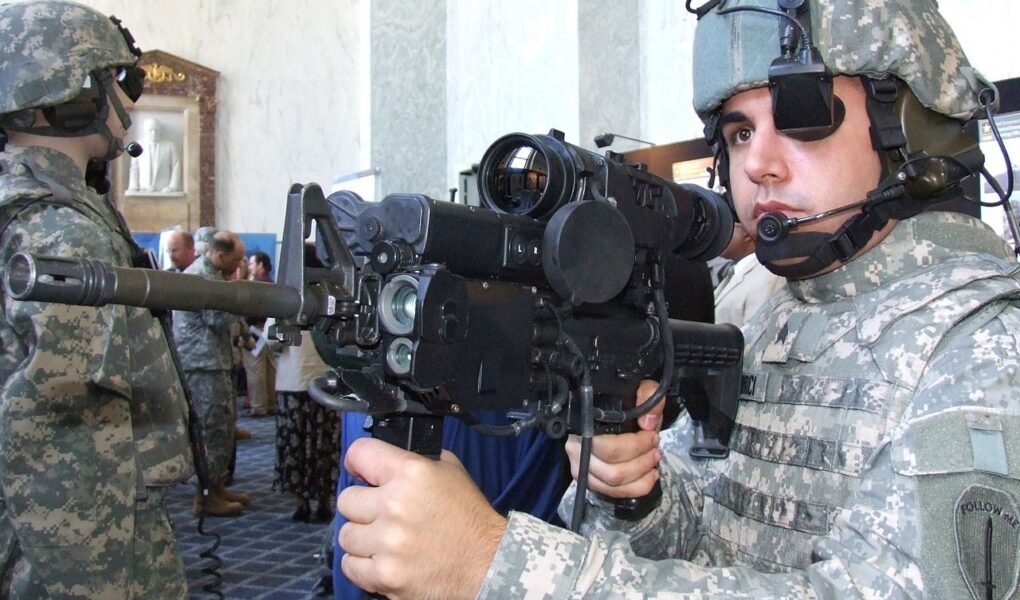The sounds of war are deafening. The constant bombardment of explosions, gunfire, aircraft, and machinery subject soldiers to extreme noise levels capable of permanently damaging their hearing. Unlike wounds or amputations, hearing loss is an invisible injury, often undiscovered until after the combat has ended. It is just as debilitating over the long term. That’s why proper combat hearing protection is vital for today’s warfighters.
Hearing loss has always been an occupational hazard of soldiering. Historically, many veterans returned home hard of hearing or outright deaf after prolonged exposure to the cacophony of battle. Trench warfare during WWI was notoriously loud, with constant artillery barrages. The introduction of artillery, machine guns, tanks, and aircraft in the early 20th century made the din of combat worse than ever.
But, the modern battlefield is louder than ever. A single rifle shot reach over 160 decibels. Heavy machine guns, grenade launchers, and shoulder-fired rockets exceed 180 decibels. Even helicopter rotors and jet engines generate noise of over 100 decibels. At these extreme noise levels, permanent hearing damage occurs almost instantly. Unlike workplace hearing loss, which develops gradually over the years, battlefield-induced hearing loss occurs in a matter of minutes.
The importance of hearing protection on the battlefield cannot be understated. Hearing is a critical sense of situational awareness and communication. Soldiers must be able to detect enemy movement, pinpoint the direction of incoming fire, and understand verbal instructions and orders. Hearing loss handicaps soldiers’ combat effectiveness and survivability. do soldiers wear ear protection? The military has made great strides in developing and mandating the use of combat hearing protection. Both passive and active systems are employed to allow soldiers, sailors, airmen, and Marines to maintain mission-critical hearing capabilities.
- Passive combat hearing protection includes earplugs and earmuffs. Made of sound-attenuating materials like viscoelastic polymers, these devices simply block or dampen noise. They are inexpensive, lightweight, and easy to use even under fire. The latest generation plugs and muffs allow “smart blocking,” reducing loud noises like gunshots while still allowing quieter sounds like speech to pass through. Special force-on-force and close-quarters battle plugs permit soldiers to communicate verbally while blocking outside clamor.
- Active combat hearing protection takes passive systems a step further. Powered electronic earmuffs and in-ear buds actively amplify quiet sounds while electronically limiting louder noises. Built-in microphones pick up soft noises like footsteps or whispers and boost them, so they are heard while also monitoring noise levels. When ambient sound exceeds safe thresholds, audio inputs are cut off or compressed to protect soldiers’ hearing. This allows face-to-face communication and enhances situational awareness.
Some systems even integrate communications radios directly into intelligent hearing protection headsets. It allows seamless transmission and reception of radio chatter while also safeguarding hearing. Forces like special operations units favor these “tactical communication headsets” for their versatility. The latest models also incorporate noise cancellation algorithms for clearer speech audio.
But, well-fitted, high-quality hearing protection undeniably prevents countless cases of severe impairment and disability. This “strategic silence” allows soldiers to continue their mission with minimal degradation of their precious sense of hearing. Worn religiously as part of rigid safety disciplines, combat hearing protection preserves both the short-term combat effectiveness and long-term health of those brave warriors who defend us in battle. The hearing saved today preserves the quality of life for our veterans long after they return from the chaos of combat to the tranquility of home.




